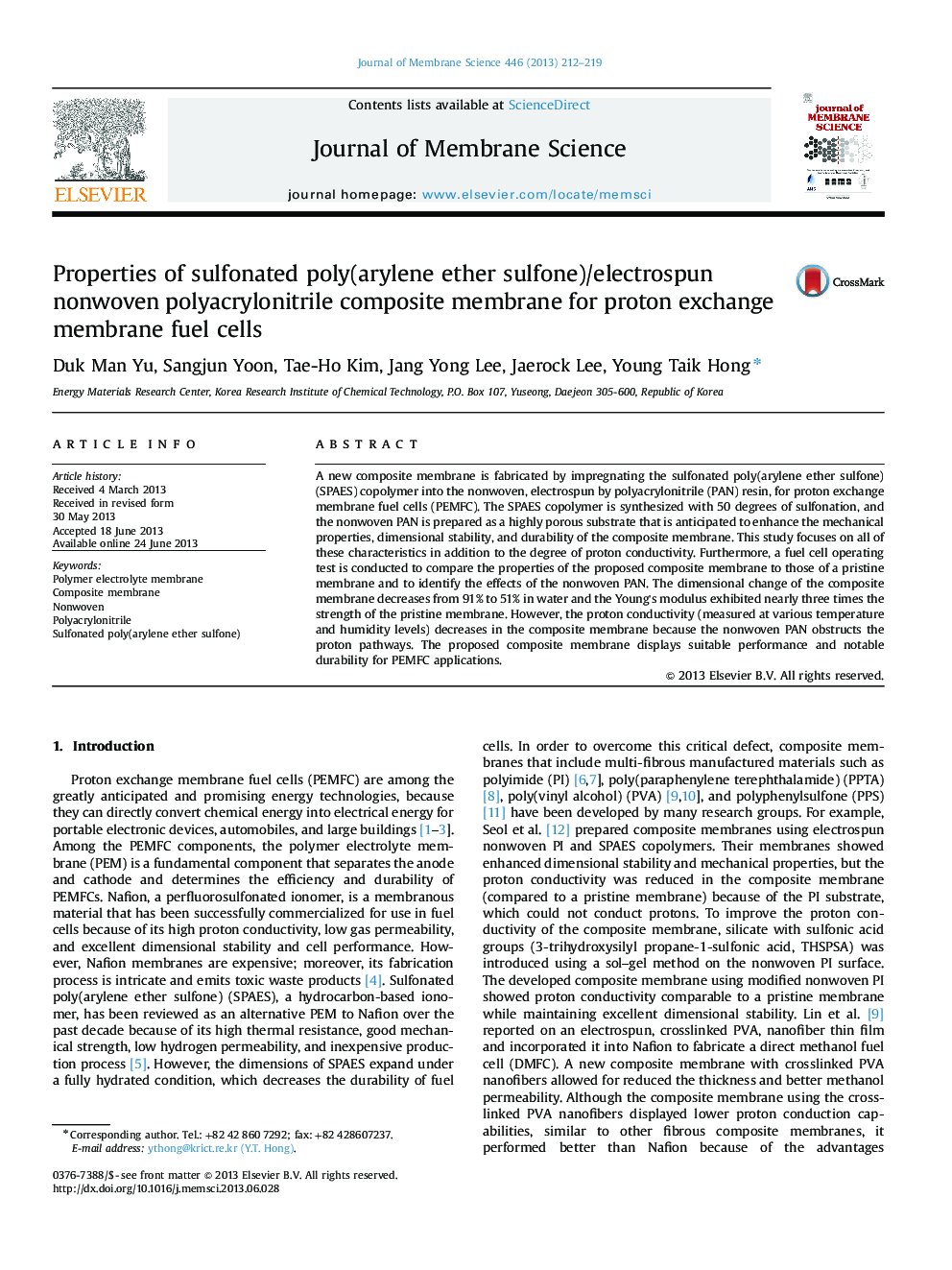| Article ID | Journal | Published Year | Pages | File Type |
|---|---|---|---|---|
| 634051 | Journal of Membrane Science | 2013 | 8 Pages |
Abstract
A new composite membrane is fabricated by impregnating the sulfonated poly(arylene ether sulfone) (SPAES) copolymer into the nonwoven, electrospun by polyacrylonitrile (PAN) resin, for proton exchange membrane fuel cells (PEMFC). The SPAES copolymer is synthesized with 50 degrees of sulfonation, and the nonwoven PAN is prepared as a highly porous substrate that is anticipated to enhance the mechanical properties, dimensional stability, and durability of the composite membrane. This study focuses on all of these characteristics in addition to the degree of proton conductivity. Furthermore, a fuel cell operating test is conducted to compare the properties of the proposed composite membrane to those of a pristine membrane and to identify the effects of the nonwoven PAN. The dimensional change of the composite membrane decreases from 91% to 51% in water and the Young's modulus exhibited nearly three times the strength of the pristine membrane. However, the proton conductivity (measured at various temperature and humidity levels) decreases in the composite membrane because the nonwoven PAN obstructs the proton pathways. The proposed composite membrane displays suitable performance and notable durability for PEMFC applications.
Keywords
Related Topics
Physical Sciences and Engineering
Chemical Engineering
Filtration and Separation
Authors
Duk Man Yu, Sangjun Yoon, Tae-Ho Kim, Jang Yong Lee, Jaerock Lee, Young Taik Hong,
